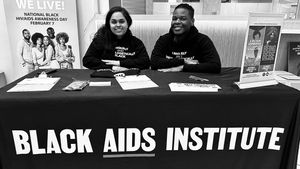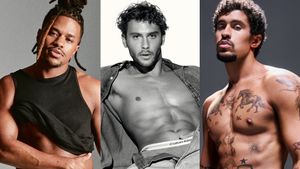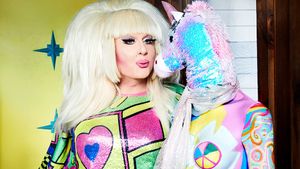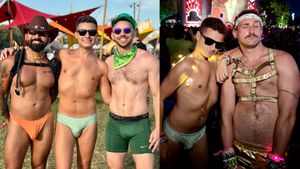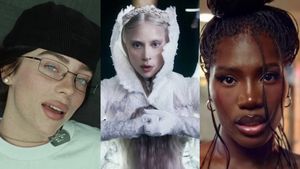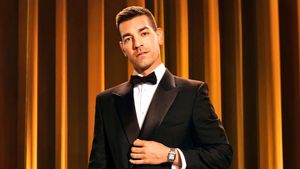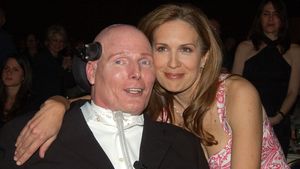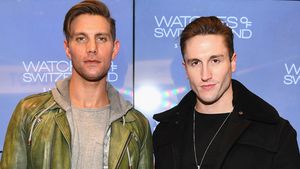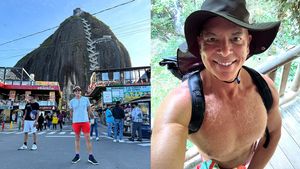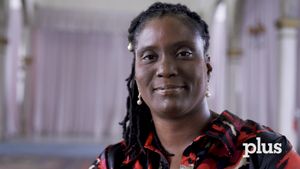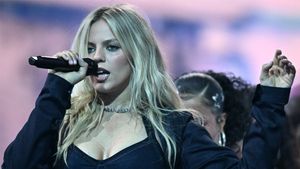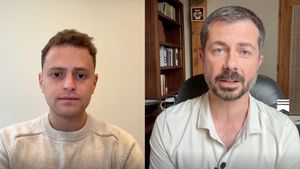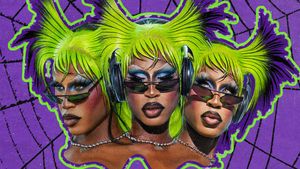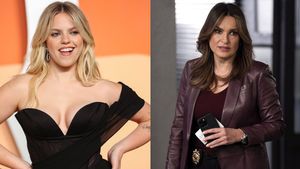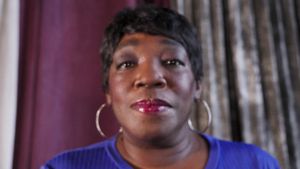I woke up today to find out another kid had committed suicide.
They did this because of tireless and ceaseless bullying due to their queer identity and they couldn’t see another way out. I know that’s not the most jolly or bright way start to this, and not as colourful as my comics tend to be, but it speaks volumes as to why I do what I do and why I think it’s important for LGBTQ+ youth to be able to see themselves in the media they consume, including comic books.
There are a number of questions I get asked about why I created The Pride, my comic book series about a team of all LGBTQ+ superheroes fighting for better representation and justice for all. Why do they need to be queer? Why is representation so important? Why superheroes? What makes superheroes so special to the queer experience?
Sometimes, the questions even start to fold along the same lines as the general 'Do we even still need a Pride?' whenever someone decides to question the validity of LGBTQ+ Pride events; a question that seems to get raised every single time a Pride is happening.
One could answer simply: why not? Why shouldn’t there be Pride events, and why shouldn’t there be Pride comics? But why be flippant! I can go into depth as to what led me to this point and why these characters, this world, sits at the front of my mind so often.
The idea of kids that don’t see any way forward other than out is key. But we’ll get to that.
Let me start with how I came to make The Pride. I have read comics for most of my life. And I pretty much started with the X-Men. Even at a young age, the idea of a group of heroes who come together to protect themselves and others from a world that fears and hates them was an immediate draw, even if at first I couldn’t articulate why.
But as I got older, it became clear to me, as I slowly came to the realisation and admitted to myself my own differences: I was gay. I wasn’t like the majority of my friends. I felt differently, I thought differently, and whether explicitly or not, it was already implied to me that that difference was something to be ashamed of, to hide. Suddenly the draw of X-Men became clear to me, and grew, as it became about finding one’s community, finding those like you and being able to make a life for yourself too.
But while mutants made a brilliant metaphor for being queer, I quickly noticed that that was all they were: a metaphor. No character, to me at the time, was visibly and openly queer. They were just coded that way, or their experiences could just be read as a good stand-in for the queer experience, but it was like they dare not put that into words.
Years later I’d learn about Northstar and Karma, but those characters weren’t very active in the comics I read at the time...either hidden, or unused, or coming in for a quick spell, and sometimes so quickly you wouldn’t even know about their different sexualities compared to the majority of other characters.
So way back then, that was when I decided I was going to make a comic about gay superheroes.
And as I myself came out, and became part of the queer community, openly and unapologetically, so too did the nascent Pride spread its wings to include more aspects of my community, more observations, more of our stories.
So why superheroes? Well, superheroes often have to live a dual life: one that is their true, honest self, floating in the clouds with a wry smile on their face and a witty retort on their lips; and then another, duller, mundane lie—to protect the ones they love from the truth...or perhaps to protect themselves, because they don’t want to risk losing those they love. What queer person hasn’t had to live some semblance of this: whether the initial fears of coming out, or the daily temporary closets we have to fling up whenever we find ourselves in a new workplace, or a new locale, or even a taxi cab where we don’t know what the reaction to the truth would be? Living life while queer is tantamount to being ready to throw on a costume and a mask at a moments notice...sometimes for lifetimes.
Superheroes are inexorably queer by analogue—a colourful and bright dramatisation of anything from being in the closet, to finding community with those like them and often their emotional, soap-opera relationships and the exploration and navigation thereof.
Queer people get superheroes. And that’s even before we get to the tight spandex and rubber, and the idealised bodies and flamboyant personalities.
But even knowing all these, even having come to this decision, I didn’t know if anyone else wanted to see what I wanted to see. So I worked on my queer superheroes idea in quiet, with no intention of pursuing it. It took close friends of mine to convince me I had something worth putting into the world.
And then Tyler Clementi threw himself from the George Washington Bridge at just 18 years old for fear of being outed.
The It Gets Better Project began around this time, and videos began pouring in from every direction. Now, I’m not the kind of person to make videos, I have my own anxieties and hang-ups, but I wanted to do...something. I needed to. Because I couldn’t imagine a world where this was okay.
Ultimately, me and my artist colleague, Gavin Mitchell, along with colourist Kris Carter, made what would actually be the first Pride story to see print. A short called "It Gets Better," where our flamboyant, colourful, and fabulously unapologetic and camp lead superhero, FabMan, has to deal with this horrific trend amongst queer youth. It became the very first Pride short story, even before we settled on the final designs on some of the characters, and including numbers to call and links to use for anyone who’d need it.
At our first comic con, armed with an ashcan that included this short story, I was approached by two kinds of people of note: the first declared how the story was a bit soapbox-y, and I’d never get anywhere telling that kind of story, as it’s so very niche. The second was a young girl, with a rainbow bracelet on her wrist who flipped through the ashcan, saw a superhero with a rainbow cape and her eyes lit up and she immediately thrust money into my hand and walked away with a giddy smile on her face.
And therein we come to our answers to both why I do what I do, and why representation is so important.
There’s still people out there who dismiss queer people out of turn. Who look at any attempt to share our stories and experiences as too niche or standing on a soapbox. And there are still kids out there who think that the world is so dark to them, just because of who they are or who they love, that there’s only one, terrible option left.
But when they can see themselves in something they love; when they can start to imagine other paths, other possibilities for themselves, no matter how fantastic or impossible it looks to them right now...it brings a little joy. And maybe that little joy can be enough. Maybe it will spark a fire in them.
Maybe it would stop them…
So I make The Pride. I make comics with LGBTQ+ superheroes who are bright and colourful and positive, and accessible to anyone, regardless of their age, their sexual, or gender identity. Something to at least try. To share our stories and show that what some might write off as "gay problems" or "someone else’s issues" are actually the same things we can all relate to and affect all of us.
And as long as there are people out there that need a little joy, who need to be able to see themselves, even if just for 20 pages...then I’ll keep on doing what I do.
Joe Glass is a comics writer and creator of LGBTQ+ superhero series, The Pride. Joe has been a critic and reporter on comics and the industry for years, all the while making his own comics, and fighting for accessibility and representation for the LGBTQ+ community in comics. Joe lives in the valleys of South Wales, UK. The Pride: Fame Monster and the rest of The Pride series will be available online as a ComiXology Original!
\u201cThe Pride Season 2 starts June 5, only on ComiXology as part of our new home as a ComiXology Originals series. \n\nWe\u2019ve got Season Ones of both The Pride & The Pride Adventures there too! \n\nAnd if you\u2019d like one of the original release TPBs, head to https://t.co/7le5kIX7Hd #lgbtq\u201d— Joe Glass\ud83c\udff3\ufe0f\u200d\ud83c\udf08PrideCAF 2022 Bristol! (@Joe Glass\ud83c\udff3\ufe0f\u200d\ud83c\udf08PrideCAF 2022 Bristol!) 1559586312













